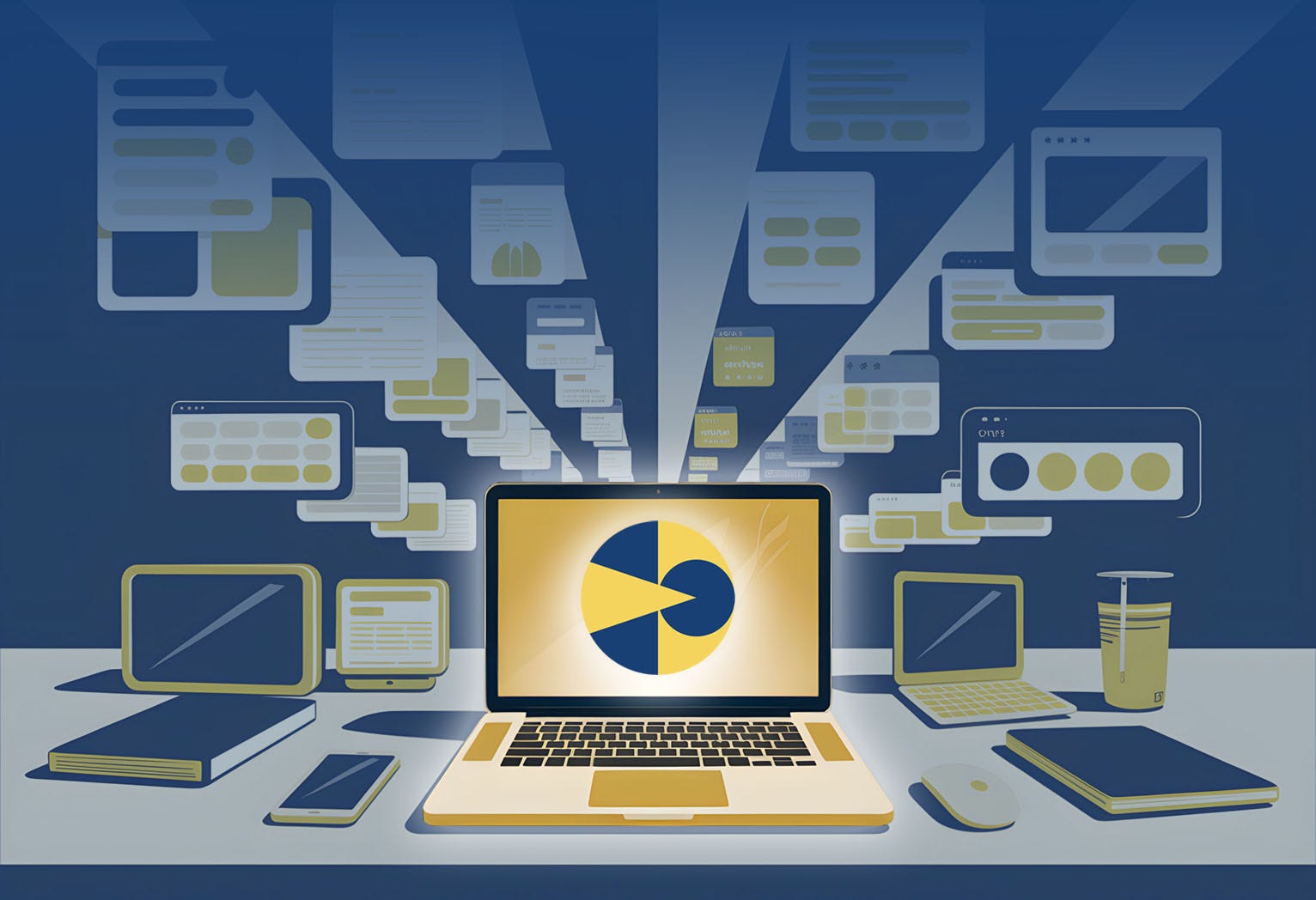The Illusion of Efficiency: How AI Is Making Us Busier
We turned to AI to simplify our work. Somehow, it multiplied it.
If you’re a digital creator, entrepreneur, or just a tech-minded professional, your browser probably shows a small army of AI tabs open with each promising to save you time, streamline your work, and make life easier. Except now you’re spending half your morning figuring out which tool to ask, which prompt to tweak, and which output to fix.
We asked AI to buy us clarity. Instead, it sold us more options.
The Pattern
Complexity rarely storms the gate. It sneaks in rather politely — one useful feature at a time.
A new dashboard here.
A clever plug-in there.
A “must-try” workflow that slowly replaces the one that actually worked.
Before long, we’ve built digital Rube Goldbergs around simple goals. What used to take focus now takes management.
I think I could call that the paradox of the age: the more efficient our tools become, the more fragmented our attention gets.
Applying Resimplification Theory
Resimplification isn’t about rejecting progress. It’s about protecting clarity.
1 – Return to What Matters
Ask the first question again: What am I actually trying to accomplish?
If a tool doesn’t move that goal forward, it’s noise dressed as innovation.
2 – Reduce Decision and System Clutter
Each new app, model, or “copilot” adds micro-decisions.
Which prompt? Which setting? Which version?
That’s not help; that’s friction.
Simplify your stack. Use fewer tools more deeply.
3 – Restore Momentum Through Small Wins
Momentum doesn’t come from mastering every AI.
It comes from freeing your brain to think clearly again.
Choose one task today that you’ll let a single, well-chosen AI handle start to finish and ignore the rest.
Notice how quickly the noise fades when you stop auditioning every possibility.
The Reset
Try this one-week experiment: The One-AI Rule:
Pick one AI tool that directly supports your core work.
Use it exclusively for that task for seven days.
Keep a short note each day on what felt clearer, faster, or lighter.
You’ll discover whether the tool truly simplifies — or whether the chase for optimization was the problem all along.
The Principle
Clarity doesn’t come from greater capability.
It comes from conscious constraint.
When everything can do everything, restraint becomes the new discipline.
Resimplification isn’t anti-AI. It’s pro-focus.
Technology should extend your attention, not divide it.
The Takeaway
You don’t need to quit AI.
You just need to stop letting it multiply your noise.
When you resimplify your digital habits, you reclaim the mental bandwidth that automation quietly drains.
The result isn’t less power—it’s more purpose.
🎧 Resimplify This
Every week, I’ll be releasing a short Resimplify This podcast episode that applies these ideas in quick, practical ways. The companion episode for this topic — “How to Resimplify Your AI Habits” — will drop shortly. Subscribe on Substack or your favorite podcast platform to catch it when it lands.
Closing Thought
When your tools create more work than they save, it’s time to Resimplify.
About the Author
Jeffrey D. Brown is a writer, designer, marketer and longtime creative strategist exploring how clarity, momentum, and purpose shape meaningful work. He’s the creator of Resimplification and author of The Destination Workbook — a practical guide built on twelve Foundational Building Blocks that help you navigate the next level of your work, business, and life.
Learn more at DestinationWorkbook.com and Resimplification.com.



